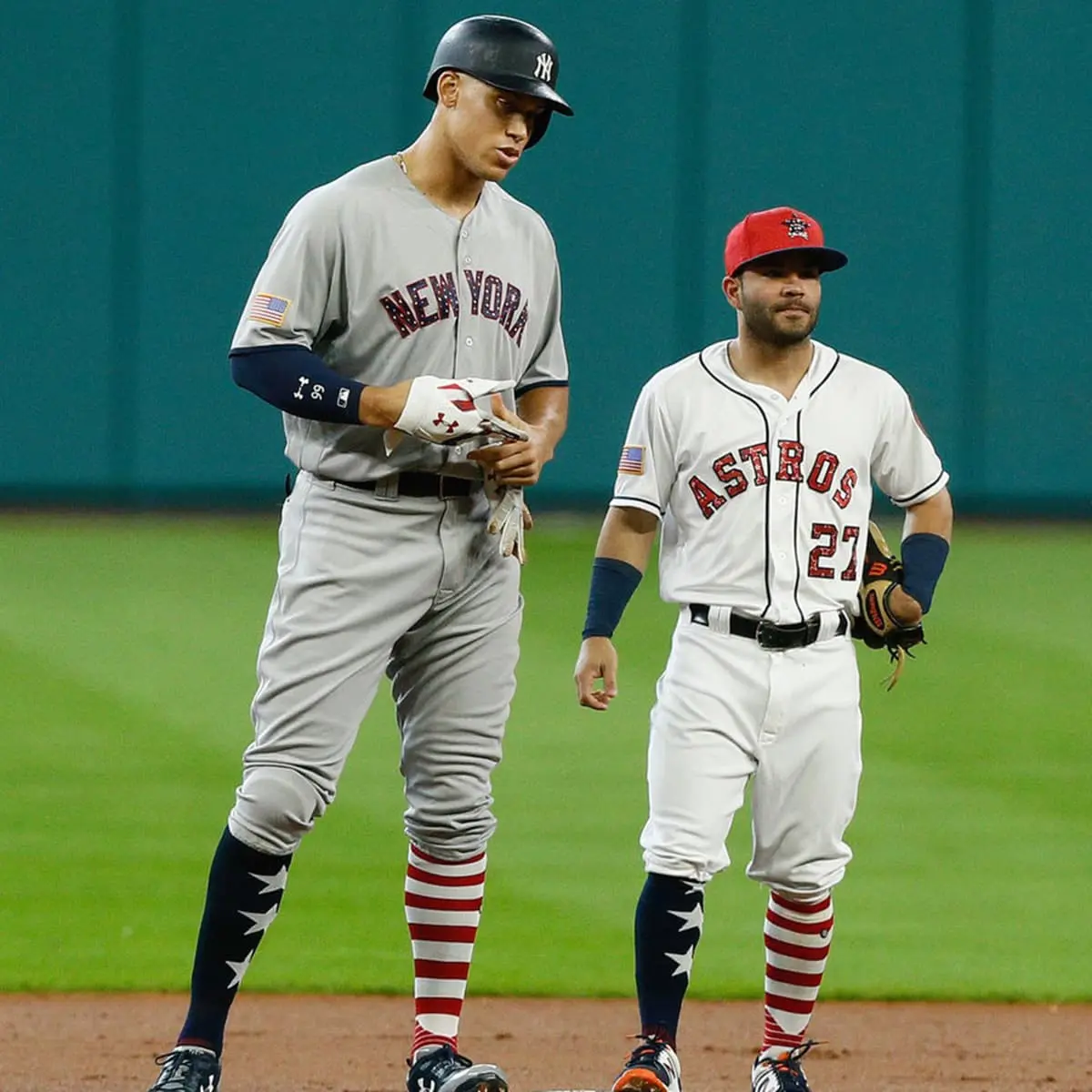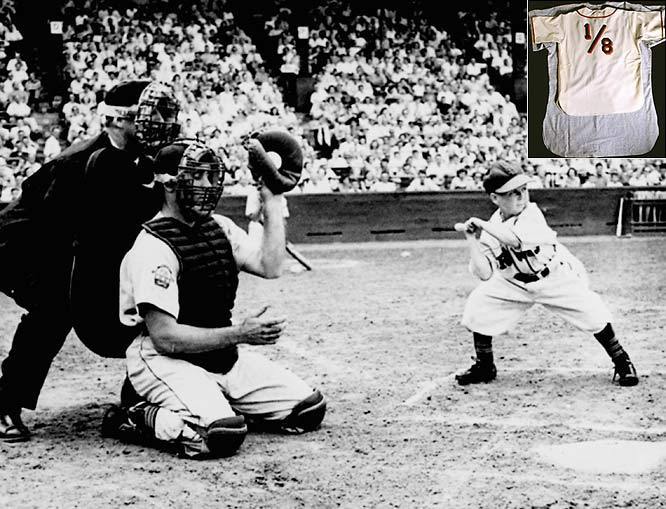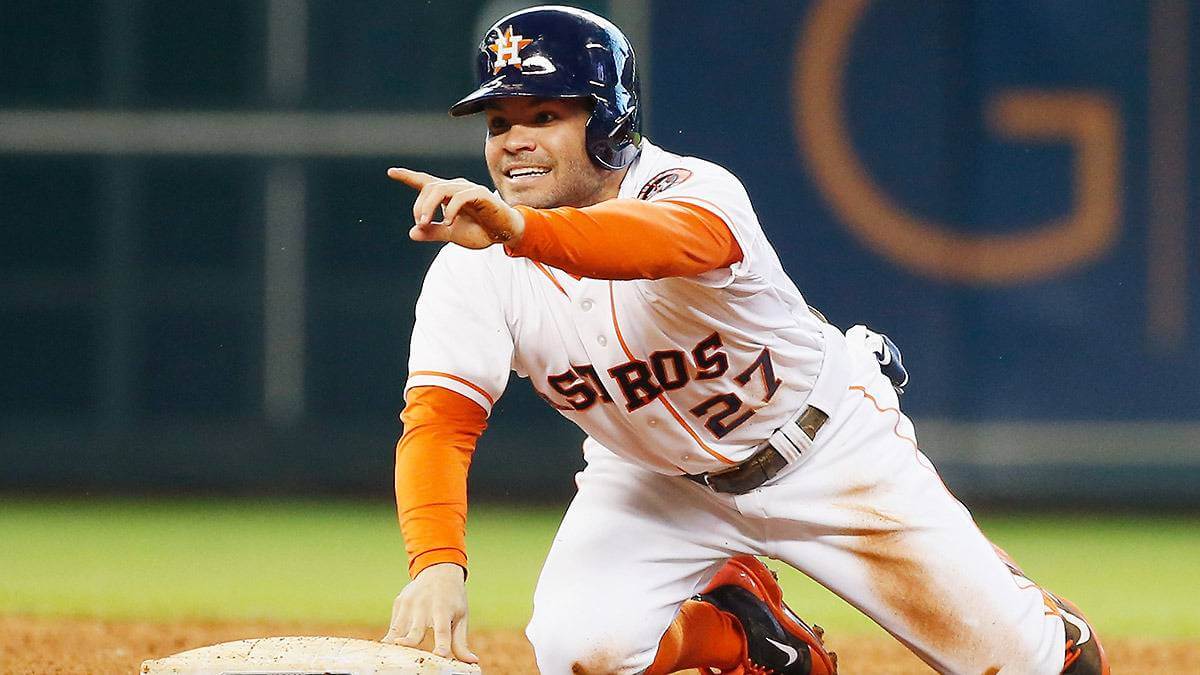Who is the Shortest MLB Player Of All Time?
The shortest Major League Baseball (MLB) player of all time is Eddie Gaedel, who stood at just 3 feet 7 inches tall. Despite his diminutive stature, Gaedel had a brief but memorable career in the MLB, appearing in one game for the St. Louis Browns in 1951. His at-bat remains a unique and remarkable moment in baseball history.
Gaedel's appearance in the MLB highlighted the importance of inclusivity and perseverance in sports. It demonstrated that even those with physical challenges can achieve their dreams through determination and support. His story continues to inspire athletes and fans alike.
Who Is The Shortest MLB Player Of All Time?
Identifying the shortest MLB player of all time involves examining several key aspects:
- Height
- Position
- Teams played for
- Career statistics
- Memorable moments
- Legacy and impact
- Historical context
- Cultural significance
Understanding these aspects provides a comprehensive view of the player's career and contributions to the sport. By analyzing height, position, and teams played for, we gain insights into the player's physical attributes, playing style, and career trajectory. Career statistics reveal their performance on the field, while memorable moments capture their most iconic achievements. Legacy and impact assess their lasting influence on the game and the broader baseball community. Historical context and cultural significance place the player's career within the wider context of baseball history and societal norms.
Eddie Gaedel
| Name | Born | Height | Weight | Position | Teams | MLB Debut |
|---|---|---|---|---|---|---|
| Eddie Gaedel | June 18, 1925 | 3'7" | 65 lbs | Pinch hitter | St. Louis Browns | August 19, 1951 |
Height
In determining the shortest MLB player of all time, height is a crucial factor. It influences various aspects of a player's performance and career trajectory.
- Physical Attributes
Height directly affects a player's physical attributes, such as reach, speed, and agility. Shorter players may have an advantage in certain positions, such as fielding ground balls or stealing bases. - Playing Style
Height can influence a player's playing style. Shorter players often adopt a more contact-oriented approach at the plate, relying on speed and agility to generate offense. - Position
Height can impact the positions a player can play effectively. Shorter players are often better suited for infield positions, such as second base or shortstop, where quick reflexes and agility are essential. - Perception and Bias
Height can influence how players are perceived and evaluated by scouts, coaches, and fans. Shorter players may face preconceived notions about their abilities, leading to potential bias in their evaluation and opportunities.
Understanding the implications of height in relation to "Who Is The Shortest MLB Player Of" provides valuable insights into the challenges and advantages faced by players of different physical stature in the highly competitive world of professional baseball.
Position
In determining "Who Is The Shortest MLB Player Of," position plays a significant role. Shorter players often excel in certain positions due to their physical attributes and skillsets.
One key aspect is fielding range. Shorter players may have an advantage in positions requiring quick reflexes and agility, such as middle infield or outfield. Their lower center of gravity can enhance their ability to field ground balls and make diving catches.
Another factor is arm strength. While height can provide an advantage in throwing distance, shorter players can compensate with accurate throws and quick releases. They may be better suited for positions that emphasize precision, such as shortstop or second base.
Real-life examples abound. Eddie Gaedel, the shortest MLB player ever, was a pinch hitter, showcasing the unique contributions shorter players can make in specialized roles.
Understanding the connection between "Position" and "Who Is The Shortest MLB Player Of" highlights the importance of considering physical attributes and skillsets when evaluating players. It also emphasizes the value of inclusivity and recognizing that players of all sizes can contribute to the game.
Teams played for
In determining "Who Is The Shortest MLB Player Of," teams played for hold significance. The teams a player represents shape their career trajectory and opportunities, influencing their visibility, development, and overall impact on the game.
For instance, Eddie Gaedel's brief appearance with the St. Louis Browns was pivotal in highlighting the unique contributions shorter players could make. His at-bat, while symbolic, paved the way for greater inclusivity and recognition of players of all sizes.
Moreover, the teams played for can provide insights into a player's skillset and adaptability. Players who have played for multiple teams may have had to adjust to different playing styles, coaching philosophies, and team cultures, showcasing their versatility and resilience.
Analyzing the connection between "Teams played for" and "Who Is The Shortest MLB Player Of" reveals the importance of considering team context when evaluating players. It highlights that a player's success and contributions are not solely determined by their physical attributes but also by the environment and opportunities they are afforded.
Career statistics
Career statistics play a crucial role in determining "Who Is The Shortest Mlb Player Of". They provide objective measures of a player's performance and contributions on the field, offering insights into their overall skillset and impact on the game.
- Batting Average
Batting average measures a player's ability to hit the ball safely. A higher batting average indicates a player's consistency and effectiveness as a hitter. - Home Runs
Home runs showcase a player's power and ability to drive in runs. A high home run total can significantly impact a team's offensive output. - Stolen Bases
Stolen bases reflect a player's speed and agility. A high number of stolen bases can create scoring opportunities and put pressure on the opposing team. - Fielding Percentage
Fielding percentage measures a player's ability to field the ball cleanly. A high fielding percentage indicates a player's defensive reliability and range.
Analyzing career statistics in relation to "Who Is The Shortest Mlb Player Of" provides valuable insights into the unique contributions and challenges faced by players of different physical stature. It highlights the importance of evaluating players based on their individual abilities and performance, rather than solely relying on preconceived notions or biases.
Memorable moments
In the context of "Who Is The Shortest Mlb Player Of", memorable moments hold immense significance, capturing iconic achievements, inspiring stories, and impactful performances that transcend the boundaries of the game. These moments not only showcase the unique abilities of shorter players but also highlight their resilience, determination, and contributions to the sport.
- Record-Breaking Performances
These moments involve extraordinary feats or milestones achieved by the shortest MLB players. Eddie Gaedel's symbolic at-bat, for instance, remains an unforgettable moment in baseball history, showcasing the inclusivity and opportunities the sport offers. - Game-Changing Plays
Shorter players have often made pivotal contributions in crucial moments of games. Their speed, agility, and defensive prowess can significantly impact the outcome, leaving lasting memories for fans and players alike. - Personal Achievements
Memorable moments also encompass personal milestones and achievements for shorter players. Overcoming physical challenges, breaking barriers, and achieving individual success are all part of their inspiring journeys. - Cultural Impact
The stories of shorter MLB players often transcend the sport, resonating with broader cultural themes of perseverance, determination, and breaking stereotypes. They inspire individuals from all walks of life, demonstrating that success can come in all shapes and sizes.
These memorable moments not only define the careers of the shortest MLB players but also contribute to the legacy and narrative of the sport. They remind us of the diversity of talents and abilities that make baseball a truly inclusive and captivating game.
Legacy and impact
Legacy and impact play a profound role in shaping the narrative of "Who Is The Shortest Mlb Player Of." Beyond their on-field accomplishments, the shortest MLB players leave a lasting impression on the sport and society through their unique contributions, inspiring stories, and the challenges they overcome.
- Inspiring Role Models
The stories of the shortest MLB players serve as a source of inspiration for individuals of all sizes and backgrounds. They demonstrate that success and determination are not limited by physical stature, challenging societal perceptions and stereotypes.
- Breaking Barriers
Shorter MLB players have often been pioneers in breaking down barriers and creating opportunities for others. Their presence in the game challenges traditional notions of athleticism and skill, paving the way for a more inclusive and diverse sport.
- Cultural Impact
The stories of shorter MLB players transcend the boundaries of baseball, resonating with broader cultural themes of perseverance, resilience, and overcoming adversity. They become symbols of hope and determination, inspiring individuals from all walks of life.
- Advocacy and Inclusion
Many shorter MLB players have become advocates for inclusivity and representation in sports. They use their platforms to speak out against discrimination and promote opportunities for all athletes, regardless of their physical attributes.
The legacy and impact of the shortest MLB players extend far beyond their playing days. They leave a lasting impression on the game and society, inspiring future generations, breaking down barriers, and advocating for inclusivity. Their stories continue to shape the narrative of baseball and remind us that true greatness comes in all shapes and sizes.
Historical context
Historical context plays a crucial role in understanding "Who Is The Shortest Mlb Player Of" by providing insights into the societal norms, technological advancements, and cultural influences that shaped the game of baseball and the opportunities available to players of different physical stature.
Early in baseball history, there were fewer opportunities for shorter players to showcase their skills due to prevailing notions of athleticism and physical prowess. However, as the game evolved and attitudes shifted, the contributions of shorter players began to be recognized and valued.
A notable example is the story of Eddie Gaedel, the shortest MLB player ever. His symbolic at-bat in 1951 challenged societal expectations and paved the way for greater inclusivity in baseball. Gaedel's appearance highlighted the importance of recognizing and embracing the unique talents of all players, regardless of their size.
Understanding the historical context of "Who Is The Shortest Mlb Player Of" enables us to appreciate the challenges faced by shorter players and the gradual shift towards inclusivity and equal opportunities in the sport. This understanding underscores the importance of fostering a diverse and welcoming environment where players of all shapes and sizes can thrive.
Cultural significance
The "Cultural significance" of "Who Is The Shortest Mlb Player Of" lies in its broader implications and impact on society, going beyond the realm of sports and statistics. It encompasses the inspiring stories, societal perceptions, and cultural narratives surrounding shorter MLB players.
- Challenging societal norms
The presence of shorter players in MLB challenges traditional notions of athleticism and physical prowess, inspiring individuals to embrace diversity and recognize that success comes in all shapes and sizes.
- Inspiring narratives
The stories of shorter MLB players often embody themes of perseverance, determination, and overcoming adversity, serving as a source of motivation and inspiration for people from all walks of life.
- Cultural icons
Some shorter MLB players have become cultural icons, transcending the sport and representing broader themes of inclusivity and breaking barriers.
- Educational value
The experiences and achievements of shorter MLB players can be valuable teaching tools, promoting discussions on diversity, equality, and the importance of embracing individual differences.
Understanding the "Cultural significance" of "Who Is The Shortest Mlb Player Of" deepens our appreciation for the role that sports play in shaping cultural perceptions and narratives. It highlights the importance of inclusivity, diversity, and recognizing the unique contributions of individuals from all backgrounds.
Our exploration of "Who Is The Shortest Mlb Player Of" reveals several key insights:
- Height, while a physical attribute, does not limit a player's potential or contributions to the sport.
- Shorter players have often overcome societal biases and physical challenges to achieve success, inspiring others to embrace diversity and challenge stereotypes.
- The presence of shorter players in MLB has enriched the game, showcasing the value of inclusivity and recognizing the unique talents of all individuals.
The stories and achievements of the shortest MLB players serve as a powerful reminder that true greatness transcends physical stature. They inspire us to embrace diversity, challenge societal norms, and recognize the potential in everyone, regardless of their size or background.



Detail Author:
- Name : Earline Ziemann
- Username : micaela22
- Email : monahan.christiana@moen.org
- Birthdate : 2003-02-09
- Address : 69091 Mohammad Ridges Apt. 781 South Bill, WY 75223
- Phone : +1-781-261-5364
- Company : Schumm, Schamberger and Brown
- Job : Cartographer
- Bio : Consequatur ut officia est qui nesciunt dolores commodi. Ut eos aut quasi. Cupiditate velit unde et. Quibusdam nihil omnis et ut.
Socials
tiktok:
- url : https://tiktok.com/@hermann1970
- username : hermann1970
- bio : Dolorem doloribus perspiciatis nobis repudiandae mollitia quisquam.
- followers : 2954
- following : 388
linkedin:
- url : https://linkedin.com/in/hermannt
- username : hermannt
- bio : Eum assumenda nulla dolorem voluptas velit.
- followers : 5590
- following : 960
facebook:
- url : https://facebook.com/thora9018
- username : thora9018
- bio : Facilis quis neque aut dicta explicabo.
- followers : 3475
- following : 1937
twitter:
- url : https://twitter.com/thora_dev
- username : thora_dev
- bio : Dolor numquam nihil optio minus. Quo sit velit in. Itaque ratione blanditiis dolor fuga iure natus.
- followers : 6369
- following : 1056
instagram:
- url : https://instagram.com/thora_hermann
- username : thora_hermann
- bio : Culpa expedita eveniet blanditiis. Excepturi officia alias distinctio at vero iusto fugiat vero.
- followers : 4662
- following : 2932